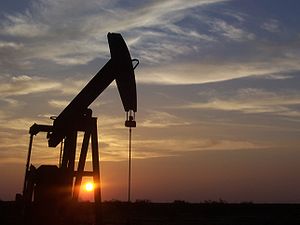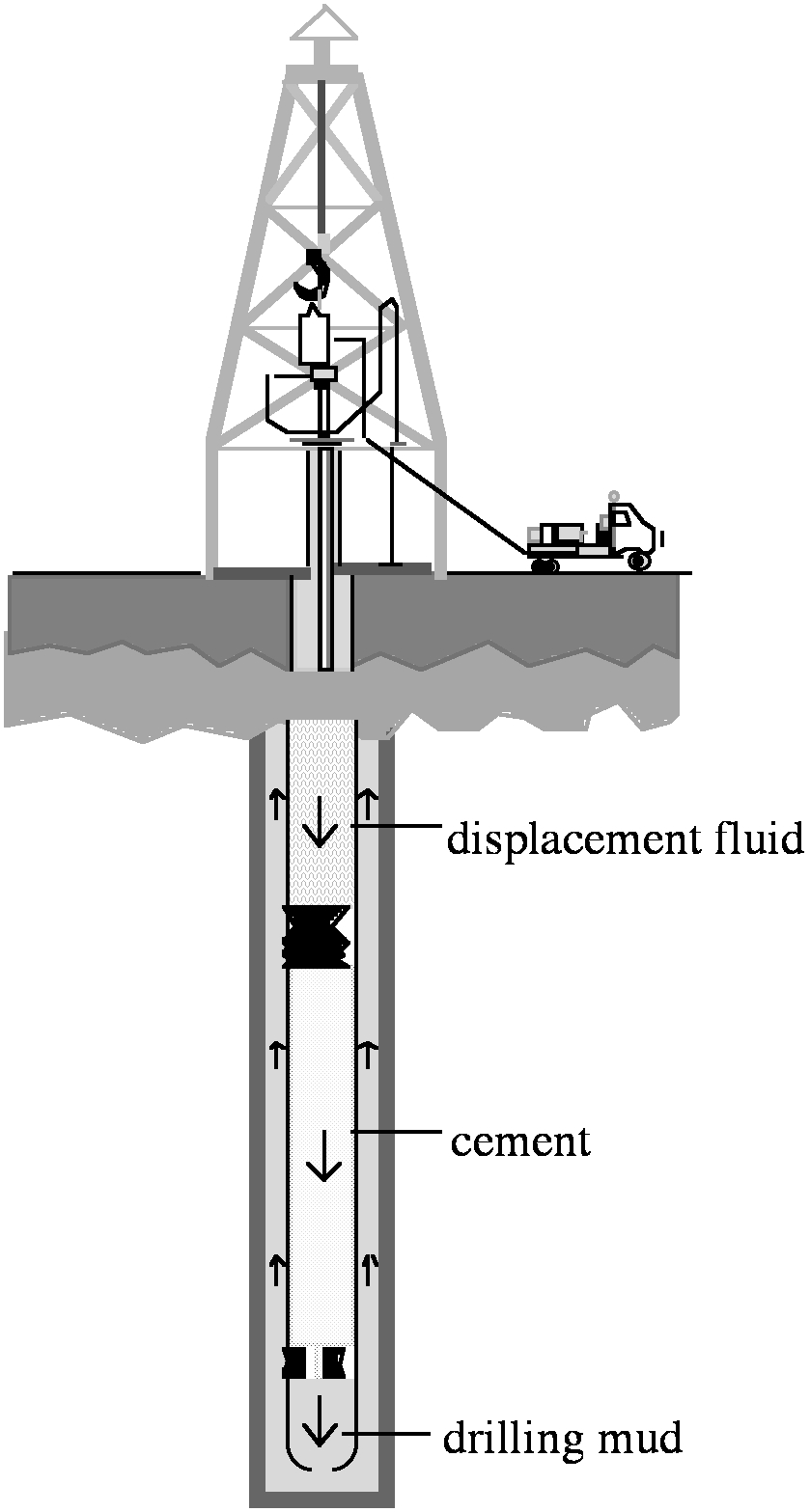 At the 6th Annual Babson Energy Conference, “Energy, Environment, & Entrepreneurship: Challenging Assumptions, Changing Perceptions”, here, held March 30, 2012, Cimbria Badenhausen, (LinkedIn), an alum of the Marlboro College MBA in Managing for Sustainability, asked Tahmid Mizan, Senior Planning Advisor of Exxon Mobil, “Are you an ENERGY company or a PETROLEUM company?”
At the 6th Annual Babson Energy Conference, “Energy, Environment, & Entrepreneurship: Challenging Assumptions, Changing Perceptions”, here, held March 30, 2012, Cimbria Badenhausen, (LinkedIn), an alum of the Marlboro College MBA in Managing for Sustainability, asked Tahmid Mizan, Senior Planning Advisor of Exxon Mobil, “Are you an ENERGY company or a PETROLEUM company?”
Mr. Mizan, of Exxon, didn’t answer the question.
Henry Ford, when asked why he doesn’t use focus groups, is believed to have said, “If I asked people what they wanted, they’d tell me faster horses.” (HBR)
Ms. Badenhausen was suggesting ‘How you identify yourself establishes what you do and how you do it.’ She was more directly referring to the strategic vision, or lack thereof, of buggy-whip manufacturers, carriage industries, ocean liners and railroads in the early 20th Century. The buggy-whip manufacturers saw themselves as critical to the horse-drawn carriage industry. Both completely missed the rise of the automobile industries. Cunard, White Star and Holland America dominated transoceanic travel, as the railroads dominated transcontinental travel. Neither saw themselves as “transport companies” and missed the boat regarding air travel.
Ms. Badenhausen, cognizant of the environmental costs of fossil fuels really asked if Exxon, in terms of the title of the conference, is changing any of their assumptions or perceptions.
Until they do, The owners and employees of Anadarko Petroleum, BP Amaco, Chevron Texaco, Exxon Mobil and other oil companies may consider these to be energy companies, but they really are something less: as Cimbria suggested, they are energy companies that specialize in extracting, refining and distributing hydrocarbons from fossil sources for use as fuels, plastics, pesticides, etc.
They are also something more than fossil-fuel companies. They pay taxes when forced, avoid taxes when able, influence public opinion with advertisements and sponsorships, influence governmental policies with tools ranging from campaign contributions to lobbying efforts, support communities with charitable contributions and scholarships, harm communities when accidents happen: they are actors within local and global economic systems; they are global citizens, altho Bill McKibben, in “Global Warming’s Terrifying New Math,” Rolling Stone, 19 July, 2012, describes them as “A Rogue Industry” and “Public Enemy Number One.”
Neoclassical economists use the term “externalities” to refer to details about which they don’t want to be concerned, such as pollution, ecosystem services loat to development. These are things that taxpayers in current or future generations must work on. Ecological economists, on the other hand, like unruly students in the back of the room, keep raising their hand – or calling out – saying things like “Wait-a-minute, what about the lost habitat in the aftermath of an oil spill?” “What about toxins in fish?” Ecological economists try to focus on the entire system.
Thus a neoclassical economist might say,
“The ‘mission’ of Exxon, BP, and other oil companies is to increase shareholder value by providing people with fuel. And the most cost-effective way to do this is to extract it out of the ground (and worry about spills when they happen or when they must be cleaned up).”
A political economist might add,
“A subordinate mission may be to try to influence public opinion. A third subordinate mission must be to mitigate the damage done by spills and other accidents.”
But ecological economists, looking from a ‘Systems Dynamics’ perspective, as described by Donella Meadows in Thinking in Systems, ISBN-10: 1603580557, here, and Global Citizen, ISBN-10: 1559630582, here, would observe that,
“Exxon Mobil, BP Amoco, Chevron Texaco, Royal Dutch Shell, and other fossil fuel companies pull coal, oil, and methane out of the ground, and transport it around the globe, which requires energy and creates pollution where the materials are extracted and where they are, occasionally spilled. Then they transform the oil into fuels, plastics, and other materials, which requires more energy and clean water. Most of the oil is burned; transformed again, with a release of heat, into carbon dioxide, water vapor, and other combustion products, most of which are released into the atmosphere. Essentially, The companies in the fossil fuel industry deplete stocks of underground hydrocarbons and surface clean water and increase stocks of atmospheric carbon dioxide, water vapor, and heat, and ground based polluted water. And we really need to think, logically, systematically and scientifically, about what massive changes in atmospheric concentrations of carbon dioxide, water vapor, and heat can do to climate, sea levels, weather patterns, the carrying capacity of earth for various species, including our own.”
These oil-from-fossils companies are large – with a market capitalization of $1.17 Trillion. Exxon, at about $404 Billion, is the largest, followed by Chevron, and Shell, each around $220 Billion, and BP, around $130 Billion. Parenthetically, these oil companies are derived from the “Consortium For Iran,” also known as “The Seven Sisters.” Their combined market capitalization is $975 Billion, 83% of the total. (Summarized in Table 1 below).
|
Publicly Traded Oil Companies |
||
|
Company |
Size ($ Billions) |
Percentage |
|
Anadarko Petroleum |
$34.20 |
2.90% |
|
BP Amoco |
130.2 |
11.11% |
|
Chevron Texaco |
219.2 |
18.70% |
|
Conoco Phillips |
67.7 |
5.77% |
|
Exxon Mobil |
404.1 |
34.48% |
|
Hess |
16.3 |
1.39% |
|
Royal Dutch Shell |
222.0 |
18.77% |
|
Solazyme |
0.8 |
0.07% |
|
Statoil |
77.6 |
6.52% |
|
Total |
1172.1 |
100.00% |
|
Note: Market Capitalization is as listed on “Google Finance” as of close of trading in New York on 8/3/12. These values in $Billions, USD. Note 2: This does not consider the value of publicly or privately held refineries like Valero, gas stations, oil exploration companies, oil industry service businesses, or state run oil companies, such as Pemex. |
||
|
Table 1 |
||
Aside from Anadarko Petroleum and Solazyme, they are profitable.
|
Publicly Traded Oil Companies |
|||
|
Company |
Price |
EPS |
P/E |
|
Anadarko Petroleum |
68.41 |
-3.31 |
Undefined |
|
BP Amoco |
41.03 |
5.38 |
7.62 |
|
Chevron Texaco |
111.12 |
13.35 |
8.32 |
|
Conoco Phillips |
55.71 |
5.18 |
10.56 |
|
Exxon Mobil |
87.55 |
8.28 |
10.57 |
|
Hess |
47.71 |
3.7 |
12.89 |
|
Royal Dutch Shell, RDS.A |
69.92 |
8.41 |
8.32 |
|
Solazyme |
13.87 |
-1.07 |
Undefined |
|
Statoil |
24.35 |
4.03 |
6.05 |
|
Note: Prices are for common stock and ADRs as of the close of trading in New York on 8/3/12. Prices and EPS values are USD. |
|||
|
Table 2 |
|||
As described by me here, and here, Solazyme, with a market capitalization of $846 Million – about one 500th – or 0.21% the size of Exxon and 0.07% the size of the publicly traded fossil oil companies listed above is a small company with contracts to deliver fuel to the US Navy and United Airlines. According to Google Finance, “Solazyme, Inc. (Solazyme) makes oil…. The Company is focused on commercializing its products into … fuels and chemicals, nutrition, and skin and personal care.
And as I suggested, it would be more correct to say Solazyme GROWS oil. Unlike fossil oil companies, it doesn’t simply dig oil out of the ground, again, according to Google Finance, Solazyme’s technology transforms a range of plant-based sugars into oils. Its renewable products can replace or enhance oils derived from the world’s three existing sources-petroleum, plants and animal fats.”
It may be worth $846 Million today, but it’s potential, if it can execute, is a much bigger chunk of the $1.17 Trillion market. But this also may explain why Mr. Mizan, the “Senior Planning Advisor” for Exxon couldn’t answer Ms. Badenhausen’s question.
Exxon, like Chevron, Chevron, Shell, etc operate at a profit. Maybe this is why the fossil fuel companies seem fossilized in their thinking. Why mess with success? They are not so much mired in the past as focused on the current quarter’s earnings and the fiscal year (and blind to the ‘externalities’ and true costs of their business model).
But Solazyme, with 0.07% of the box of the economy we can call “The Oil Industry” and operating at a loss, must think out of the box. It’s a small furry mammal trying to survive among big rapacious reptiles. It’s betting the farm that it has disruptive technology. Those small furry mammals could regulate their body temperature, thus they could more efficiently metabolize food when the weather was very hot and very cold. What if Solazyme can redefine the oil industry? What if it can create a sustainable industry based on fuel from renewable sources? What if it can create the fuel we need without pollution, oil spills, wars?
